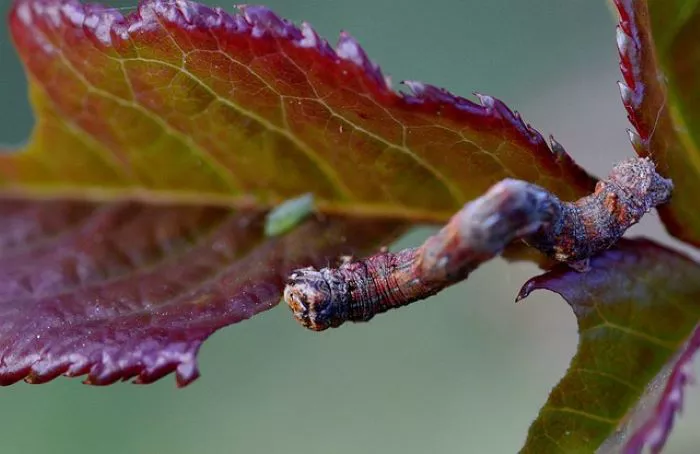Preventing pests in plants is essential for maintaining healthy gardens and indoor plant collections. Pests can cause significant damage by feeding on leaves, stems, and roots. They can also spread diseases that may harm or even kill plants. Effective pest prevention strategies can reduce the likelihood of infestations and ensure that plants thrive. This article will explore various methods to prevent pests, focusing on cultural practices, environmental management, and monitoring techniques.
Understanding Plant Pests
Plant pests include a wide range of organisms such as insects, mites, nematodes, and diseases caused by fungi, bacteria, or viruses. Common pests include aphids, spider mites, whiteflies, and caterpillars. Each pest has unique characteristics and behaviors, which can influence prevention strategies.
Pests can reproduce quickly. For example, aphids can give birth to live young, leading to rapid population growth. Understanding the life cycles and habits of pests is crucial for effective prevention.
Cultural Practices for Pest Prevention
Cultural practices involve modifying the growing environment to make it less favorable for pests. Implementing good cultural practices is one of the most effective ways to prevent pest infestations.
Choose Resistant Varieties: Select plant varieties that are known for their resistance to specific pests and diseases. Many nurseries offer plants bred for pest resistance, which can significantly reduce the risk of infestations.
Maintain Healthy Plants: Healthy plants are more resilient to pests. Ensure that plants receive adequate water, nutrients, and sunlight. Regularly check for signs of stress, such as yellowing leaves or stunted growth. Addressing these issues promptly can strengthen plants and make them less susceptible to pests.
Practice Crop Rotation: In gardens, rotating crops each season can disrupt pest life cycles. This practice reduces the chances of pests establishing themselves in the soil and helps maintain soil health.
Implement Good Hygiene: Keeping the growing area clean is vital for pest prevention. Remove dead leaves and plant debris, as these can harbor pests and diseases. Regularly clean pots, tools, and gardening equipment to prevent the spread of pests.
Use Companion Planting: Companion planting involves growing certain plants together to deter pests or attract beneficial insects. For example, marigolds can repel nematodes, while herbs like basil can attract pollinators and predatory insects that help control pest populations.
Environmental Management
The environment in which plants grow can significantly influence pest populations. Managing the growing environment can help prevent infestations.
Control Moisture Levels: Overwatering can lead to root rot and attract pests. Water plants appropriately based on their needs and environmental conditions. Ensure proper drainage to prevent water accumulation around plant roots.
Provide Adequate Air Circulation: Good air circulation around plants helps reduce humidity levels, which can deter pests and diseases. Space plants adequately to allow air to flow freely and avoid overcrowding.
Adjust Light Conditions: Ensure that plants receive the right amount of light for their specific needs. Some pests thrive in low-light conditions, so providing adequate light can help keep them at bay.
Manage Soil Health: Healthy soil promotes strong plants. Use organic matter to improve soil structure and fertility. Additionally, practice mulching to retain moisture, suppress weeds, and create a habitat for beneficial organisms.
Monitoring and Early Detection
Regular monitoring of plants is crucial for early detection of pests. Catching infestations early can prevent them from spreading and causing significant damage.
Inspect Plants Regularly: Check the undersides of leaves, stems, and the soil for signs of pests. Look for visible insects, webbing, or sticky residues. Regular inspections help identify problems before they escalate.
Look for Damage: Signs of pest damage can include holes in leaves, discolored foliage, or wilting plants. Identifying the type of damage can help pinpoint the responsible pest and inform prevention strategies.
Use Traps: Sticky traps can be used to monitor flying insect populations. Place these traps near affected plants to catch pests and assess their presence.
Educate Yourself: Stay informed about common pests in your area and their life cycles. Understanding pest behaviors can help you anticipate potential problems and take preventive measures.
Encouraging Beneficial Organisms
Promoting beneficial organisms can help control pest populations naturally. These organisms can reduce the need for chemical interventions.
Attract Beneficial Insects: Plant flowers that attract beneficial insects such as ladybugs, lacewings, and parasitic wasps. These insects feed on common pests like aphids and caterpillars, helping to keep their populations in check.
Create a Diverse Ecosystem: A diverse garden attracts a variety of beneficial organisms. Plant a mix of flowers, herbs, and vegetables to create a balanced ecosystem that supports natural pest control.
Provide Habitat: Leave some areas of your garden undisturbed to provide habitat for beneficial insects. This can include leaving patches of wildflowers or maintaining a compost pile.
Using Non-Chemical Control Measures
Non-chemical control measures can be effective in preventing pests without harming beneficial organisms or the environment.
Hand-Picking: For larger pests like caterpillars or slugs, hand-picking can be an effective method. Wear gloves and remove pests directly from the plants.
Insect Barriers: Use row covers, nets, or floating row covers to protect plants from pests. These barriers prevent insects from accessing the plants while allowing sunlight and moisture to reach them.
Natural Deterrents: Some natural substances can deter pests. For example, garlic spray or hot pepper spray can repel certain insects. These solutions are often safe for plants and beneficial organisms.
Conclusion
Preventing pests in plants requires a proactive approach that combines cultural practices, environmental management, monitoring, and the encouragement of beneficial organisms. By implementing these strategies, gardeners can create a healthy growing environment that minimizes the risk of pest infestations.
Regular inspections and prompt action can help maintain plant health and prevent significant damage. With diligence and knowledge, gardeners can protect their plants and enjoy a thriving garden or indoor plant collection. Embrace these prevention techniques to ensure that your plants remain healthy and beautiful, free from the threat of pests.


